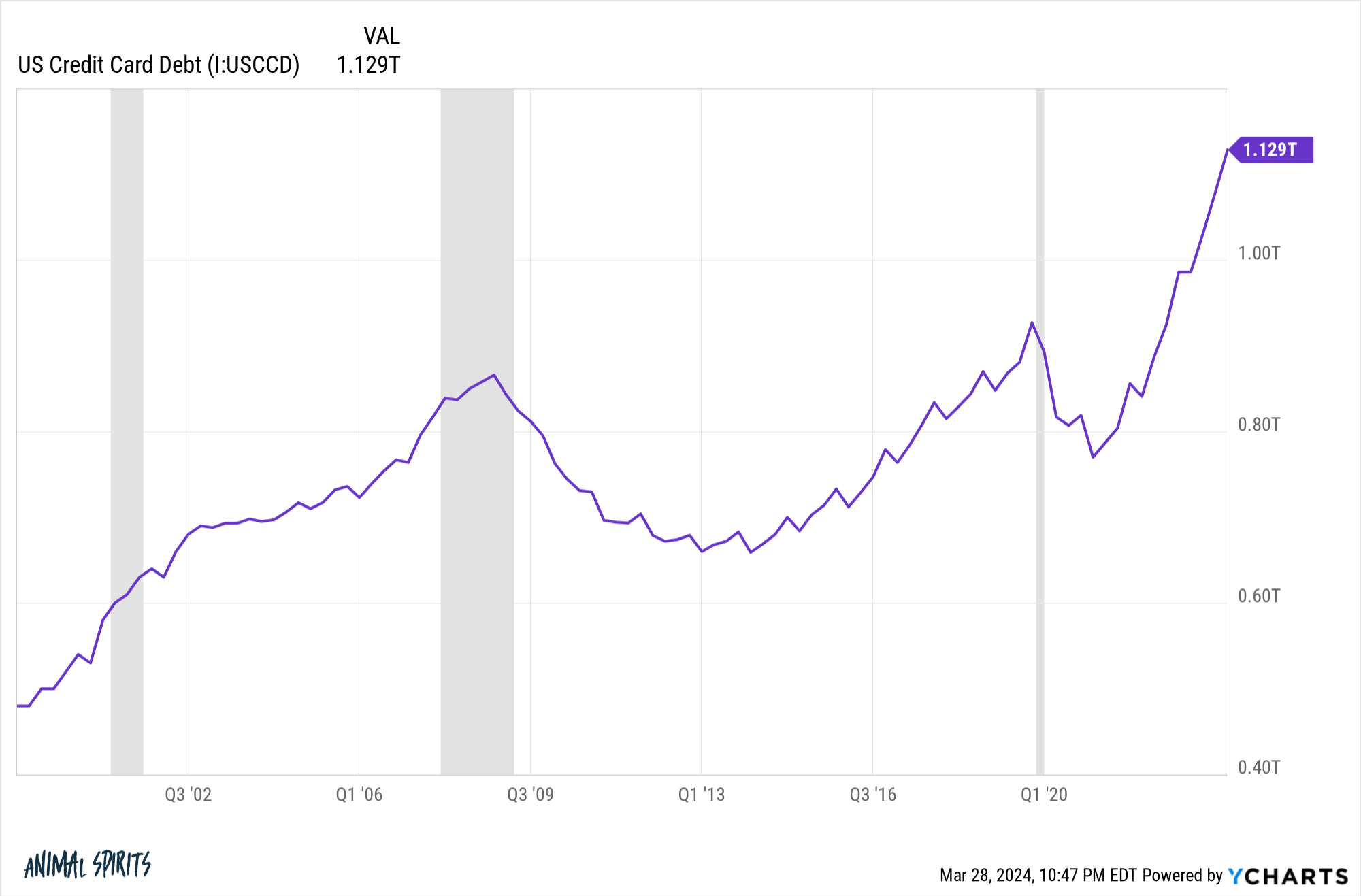[ad_1]
I acquired a brand new bank card this week.
What can I say?
I’m a sucker for a very good sign-up bonus and the free luggage on American flights will mainly pay for the annual charge.
A brand new card all the time comes with a number of paperwork. They’ve all types of numbers to run by you, together with loads of positive print.
As a private finance junkie, I all the time prefer to thumb by these items. This one caught my eye:
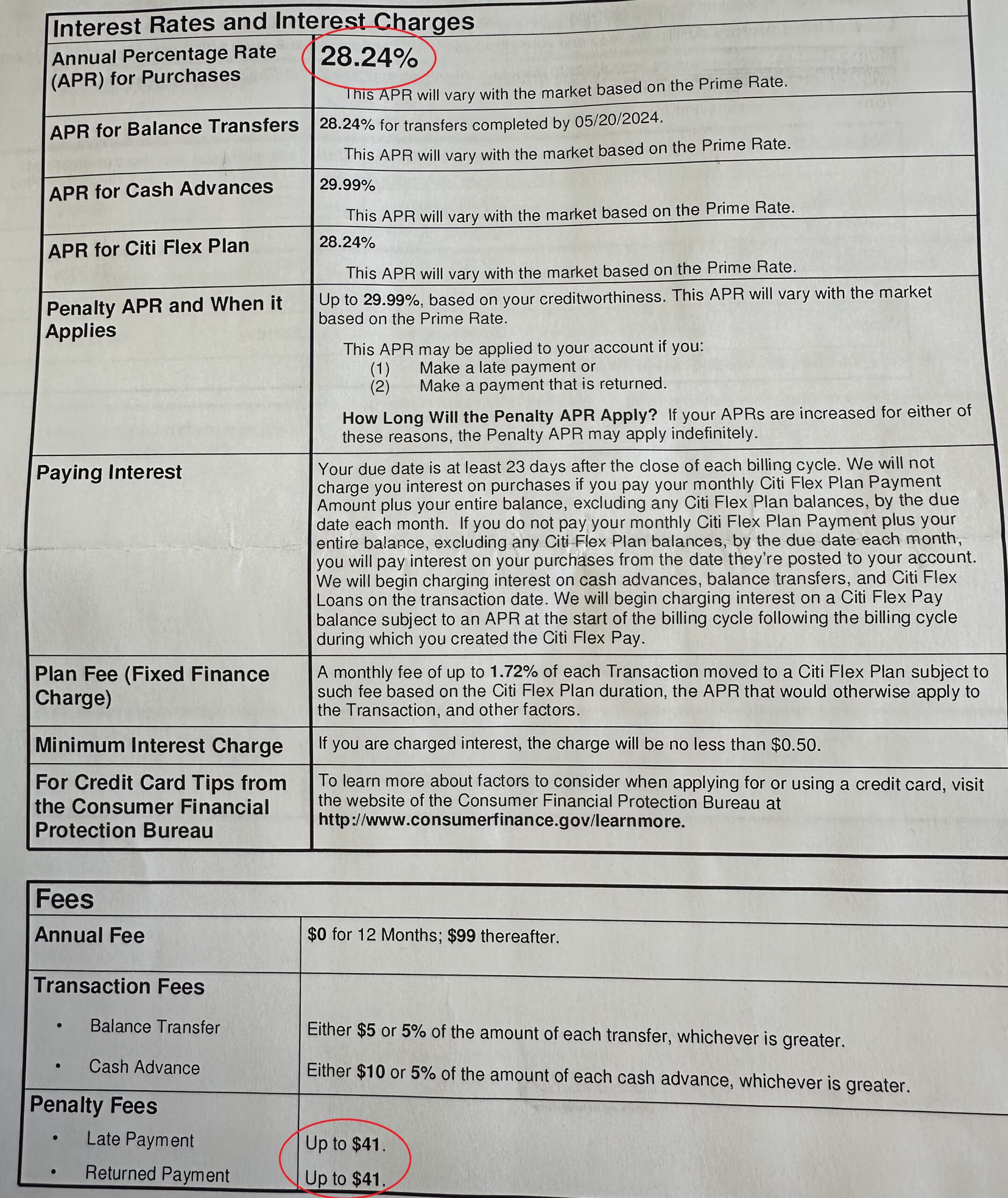
28%?!
Jeez.
I get it–unsecured debt and all. Charges are larger, however that’s a ridiculously excessive borrowing value.
With charges that top it seems like bank card debt needs to be a large downside on this nation. Is it?
It’s not nice however the state of affairs isn’t horrible both.
Let’s dig into the numbers.
The Federal Reserve has all types of information on bank cards.
There may be definitely extra bank card utilization of late:

Whereas different forms of debt are comparatively steady, the variety of bank card accounts continues to develop.
This could possibly be as a result of extra individuals are going into bank card debt or folks like me who open extra accounts to earn rewards and offers.
Bank card delinquencies are on the rise however not in panic territory by any means:
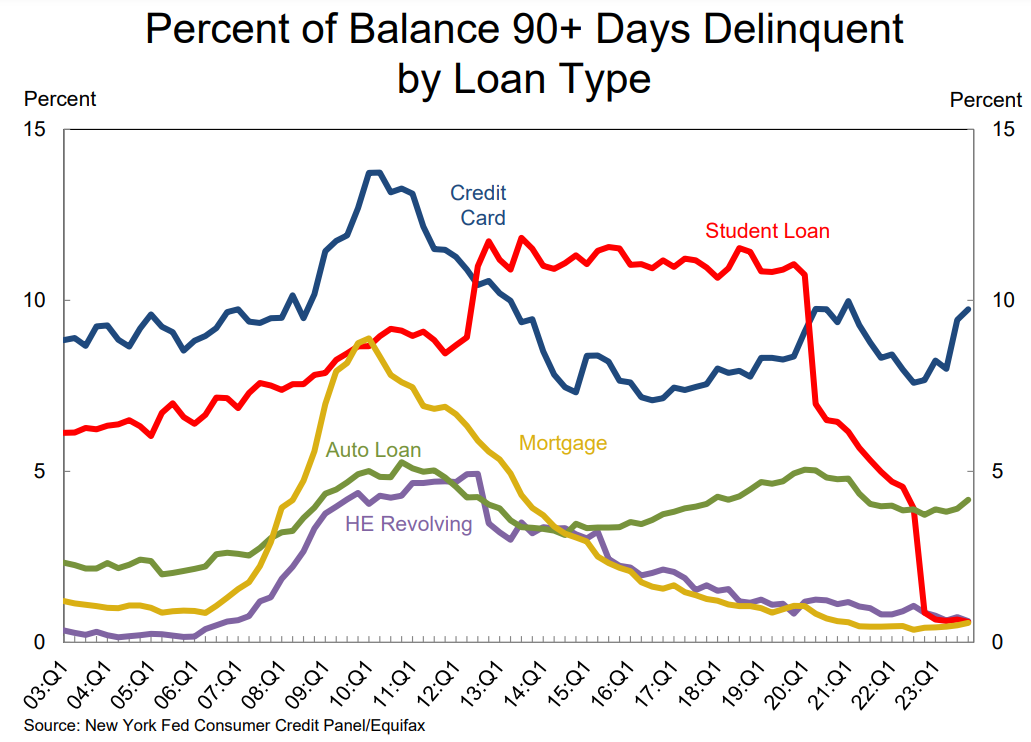
Bank card debt isn’t placing folks within the poor home both judging from the low degree of bankruptcies:
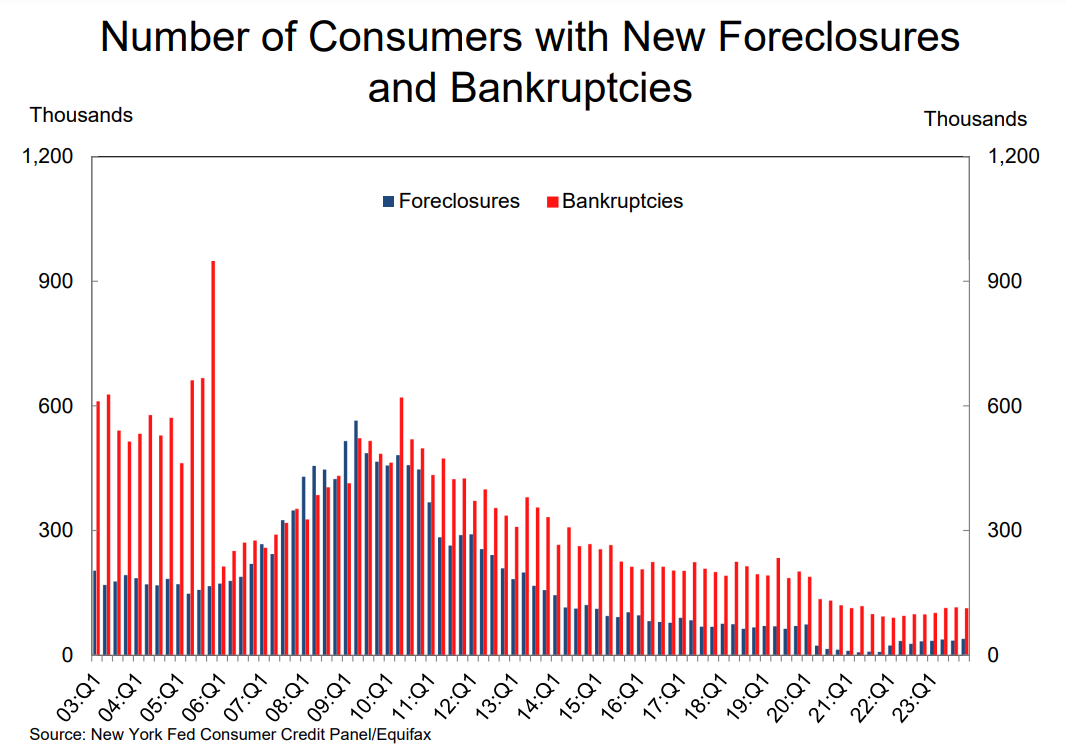
The variety of bankruptcies is much decrease than it has been this century.
There are, nevertheless, nonetheless loads of folks in bank card debt.
In response to the Fed, 45% of American households have bank card debt. That quantity has been comparatively steady over time:
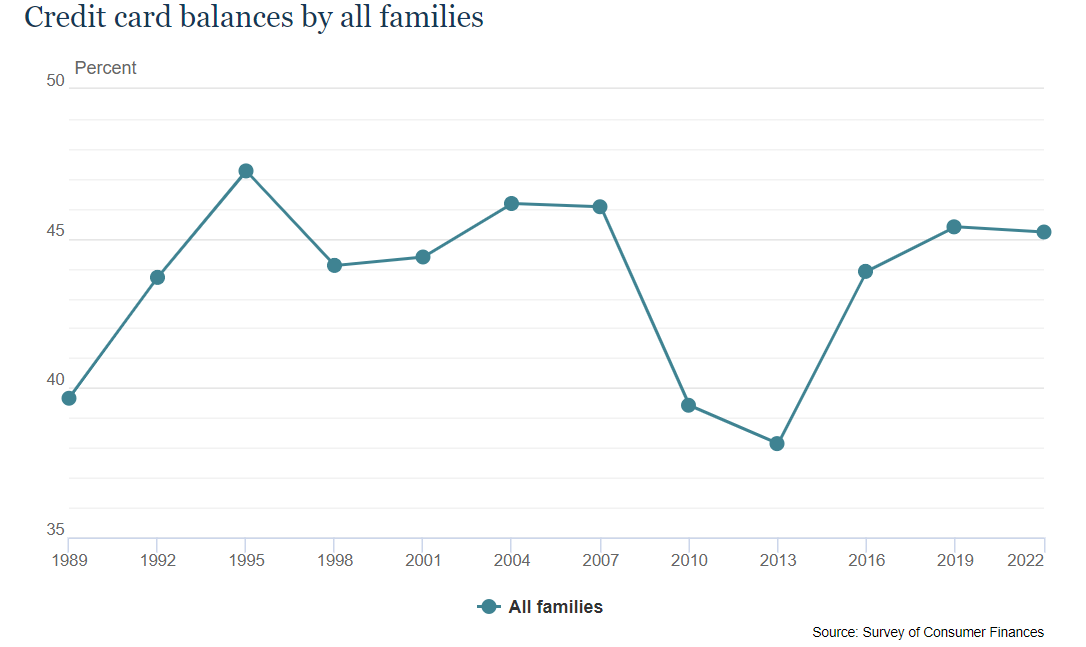
The median stability is round $2,700 (the typical is $6,100). Once more, not the tip of the world however that may definitely add up when you think about how egregious the borrowing charges are.
Surprisingly, the median family stability has really been falling for a while now:
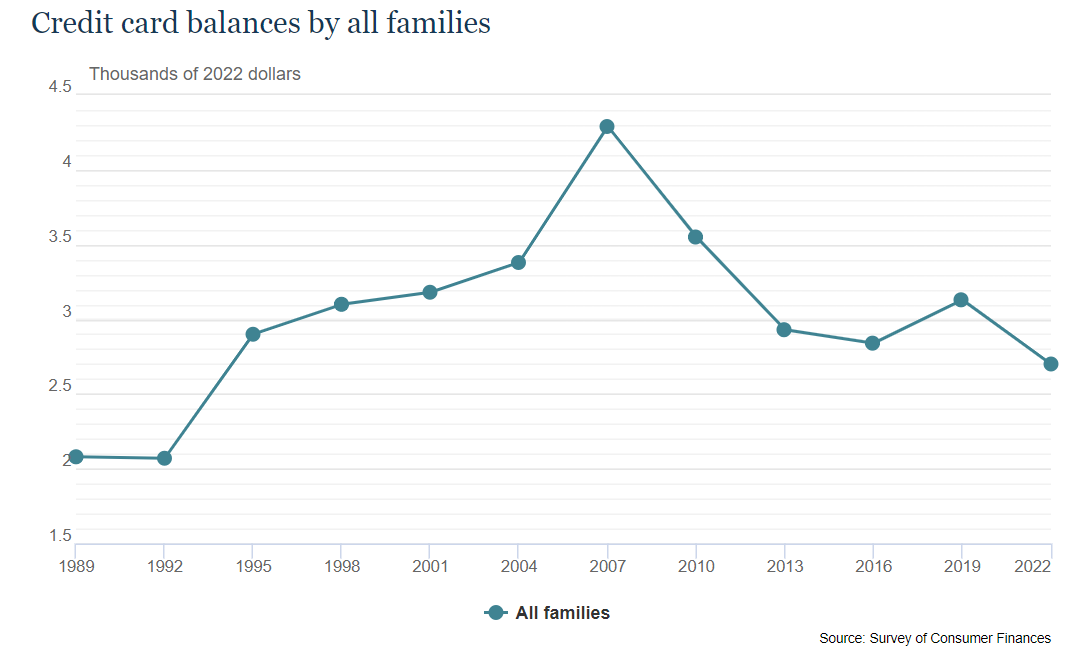
The median family bank card stability was a lot larger heading into the Nice Monetary Disaster than it’s now. Regulate that quantity for inflation, and issues look even higher proper now.
We stay in a bifurcated world on the subject of bank card debt.
The 45% of people that carry a stability are paying a number of the highest borrowing prices conceivable. It’s the largest type of anti-compounding in all of finance.
The opposite 55% of households use bank cards merely for his or her comfort and rewards and repay their stability every month. The rewards they earn are primarily being backed by the 45% of people that pay curiosity.1
I repay my stability each month and use the bank card firms for rewards and sign-up bonuses. It’s a fairly whole lot.
However I perceive how bank card debt can spiral uncontrolled for sure households. It’s handy. Swiping or tapping that card doesn’t really feel like actual cash. Typically you haven’t any different selection nevertheless it needs to be your final resort.
In case you’re paying 20% on a $6,000 stability that’s $100 a month in curiosity expenses. That may not look like a lot nevertheless it provides up. Even in case you make a $30 minimal cost, your stability after 12 months is sort of $6,900.
Holding a bank card stability from month to month is among the worst monetary selections you may make.
The primary rule of private finance is you repay your bank card stability each month.
The second rule is don’t neglect rule primary.
Michael and I talked about bank cards and rather more on this week’s Animal Spirits video:
Subscribe to The Compound so that you by no means miss an episode.
Additional Studying:
Why I’m Not Nervous About $1 Trillion in Credit score Card Debt
Now right here’s what I’ve been studying these days:
Books:
1Plus, the service provider swipe charges.
This content material, which comprises security-related opinions and/or data, is supplied for informational functions solely and shouldn’t be relied upon in any method as skilled recommendation, or an endorsement of any practices, services or products. There will be no ensures or assurances that the views expressed right here will likely be relevant for any explicit information or circumstances, and shouldn’t be relied upon in any method. You need to seek the advice of your individual advisers as to authorized, enterprise, tax, and different associated issues regarding any funding.
The commentary on this “publish” (together with any associated weblog, podcasts, movies, and social media) displays the non-public opinions, viewpoints, and analyses of the Ritholtz Wealth Administration staff offering such feedback, and shouldn’t be regarded the views of Ritholtz Wealth Administration LLC. or its respective associates or as an outline of advisory providers supplied by Ritholtz Wealth Administration or efficiency returns of any Ritholtz Wealth Administration Investments consumer.
References to any securities or digital property, or efficiency knowledge, are for illustrative functions solely and don’t represent an funding suggestion or supply to supply funding advisory providers. Charts and graphs supplied inside are for informational functions solely and shouldn’t be relied upon when making any funding choice. Previous efficiency will not be indicative of future outcomes. The content material speaks solely as of the date indicated. Any projections, estimates, forecasts, targets, prospects, and/or opinions expressed in these supplies are topic to vary with out discover and will differ or be opposite to opinions expressed by others.
The Compound Media, Inc., an affiliate of Ritholtz Wealth Administration, receives cost from varied entities for commercials in affiliated podcasts, blogs and emails. Inclusion of such commercials doesn’t represent or indicate endorsement, sponsorship or suggestion thereof, or any affiliation therewith, by the Content material Creator or by Ritholtz Wealth Administration or any of its staff. Investments in securities contain the danger of loss. For extra commercial disclaimers see right here: https://www.ritholtzwealth.com/advertising-disclaimers
Please see disclosures right here.
[ad_2]

